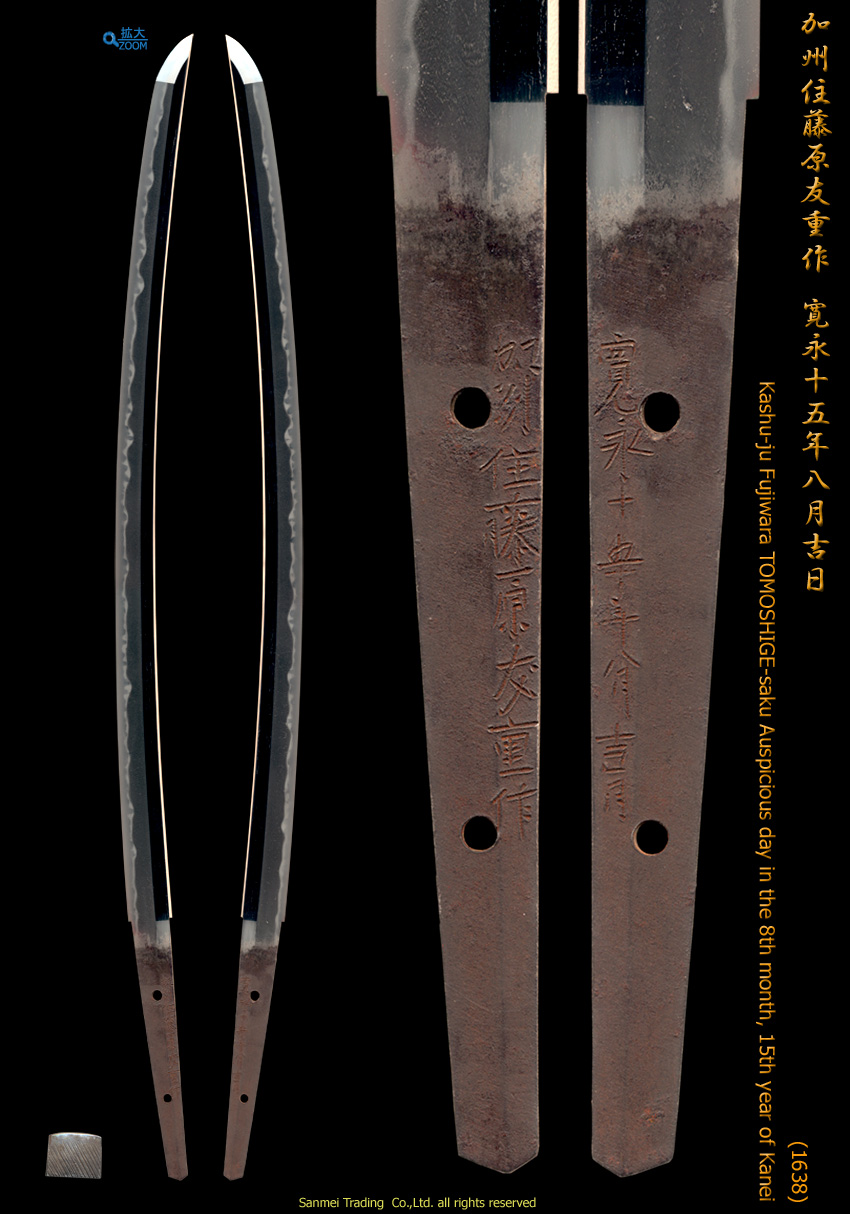Auspicious day in the 8th month 15th year of Kanei
Length of cutting edge63.2cm Curvature2.0cm Width of base31.8mm Width of Yokote22.2mm Thickness of base7.0mm
Kitae(forging pattern) : Kitae-hada is conspicuous Itame-hada (wooden grain) generally mixing in with large Mokume (burl grain) marks, of which Hiraji surface is covered in speckled ji-nie corresponding to Clove-outline that generates darkish large Nie lines along wooden grain so called CHIKEI activity.
Hamon(tempering pattern) : Hamon generates Choji (clove) outline, upper the blade, taller the clove, mixing in with tadpole shape (Kawazu-ko). The interior of temper is filled in Nioi and shows clove-feet indication toward the cutting edge.
Boshi (tip): The temper of tip becomes flat under the Yokote then straight with Hakikake brush end.
Nakago(tang) : Original UBU with two mekugi-ana retaining holes. Kattesagari (slightly slanting leftward) file marks. Iriyama (V-shape) heel. The signature in front is long character that starts from the place of work Kashui-ju, clan Fujiwara then smith name TOMOSHIGE-saku, the reversed side is chiselled the date of year Auspicious day, in the 8th month 15th year of Kanei (1638).
The frontier TOMOSHIGE in Fujishima school was a leading disciple of smith RAI KUNITOSHI during Kenmu(1334), Kamakura period and had been prospered till 12th generations until Genroku (1688), middle of Edo period. The subject katana was made by Tsugubei TOMOSHIGE who succeeded the 9th generation of the noble TOMOSHIGE family. Very beginning of Edo period,when it still spread of warlike spirit and aroused the code of Samurai, it may be infered from these heroic shape, fine steel and cool choji temper which indicates that this katana was custom made by the special demand from the master of martial arts in Kaga domain. ITAME grains forging pattern gushes out from an abyss of steel that is full of beauty with an old grace style, whereas the entire blade holds an heroic shape. The date of year 1638 - Auspicious day in the 8th month 15th year of Kanei on the reversed side is rare to find and adds an historical value as well.
An old silver foil Habaki collar, preserved in a Shira-Saya plain wood mounting.
Fresh polish/Condition scale: very good (using a scale of mint-excellent-very good-good-fair-poor) condition.

